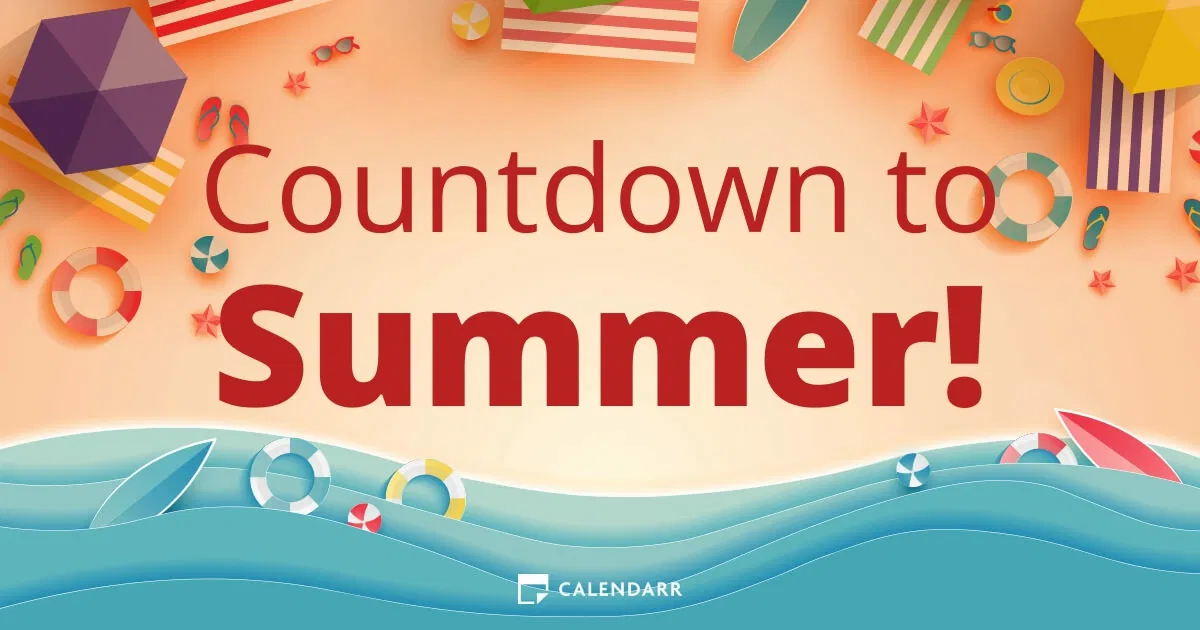Introduction
As the school year approaches its conclusion, students and parents alike begin to feel the anticipation of summer break. The excitement builds as the days shorten, and everyone eagerly awaits that liberating moment when the final bell rings. Knowing how many days are left until summer break can add to the excitement and allow for effective planning of fun activities, vacations, and relaxation time. This article serves as your ultimate guide to understanding the school calendar, calculating the countdown, and making the most out of your summer break. Let’s dive into the details!
1. Understanding the School Calendar
1.1 Overview of School Year Structure
To effectively count down to summer break, it’s crucial to first understand the structure of the school year. Generally, schools operate on an academic calendar that starts in late summer or early fall and concludes in late spring or early summer. While most schools in the United States follow a similar schedule—starting in August or September and ending in May or June—variations exist based on local district policies, holidays, and year-round schooling options.
For instance, some districts might start their school year earlier to allow for a longer summer break, while others may operate on a modified calendar that includes shorter breaks throughout the year. This is why it’s essential for students and parents to check their specific school calendar for accurate dates. By doing so, you can easily identify when summer break officially begins and how many days remain in the school year.
1.2 Importance of Knowing Your School’s Schedule
Having a firm grasp of your school’s schedule is not just beneficial for counting down the days until summer break; it also helps in planning academic and extracurricular activities. For example, understanding when finals, projects, and report cards are due allows for better preparation and reduces last-minute stress.
Furthermore, being aware of other important dates, such as holidays, professional development days, and early dismissals, can help students and parents create a more organized plan for the remaining weeks of school. Schools often publish their calendars on websites, which are accessible to parents and students, making it easy to stay informed about any changes that might occur.
2. How to Calculate the Days Until Summer Break
2.1 Step-by-Step Calculation
Once you have confirmed the end date of the school year, calculating the days remaining becomes straightforward. First, take today’s date and find the difference in days between today and the last day of school. For instance, if today is April 15 and the school year ends on June 10, you can simply count the number of days left in each month: 15 days in April, 30 days in May, and 10 days in June, totaling 55 days until summer break.
This method not only provides clarity but also adds a sense of accomplishment as you see the countdown progress. Some students may prefer to mark this countdown on a calendar, allowing them to visualize how close they are to summer vacation.
2.2 Tools and Resources for Countdown
In the digital age, there are numerous tools available that can assist with tracking the days until summer break. Several countdown apps allow users to input specific dates and will automatically calculate the number of days remaining. Apps like Countdown Days or Days Until can be particularly useful, providing reminders and notifications as the date approaches.
Additionally, printable calendars can serve as a fun way to track the countdown. By marking off each day, students can visually appreciate their progress and build excitement for the upcoming break. These resources can make the countdown interactive and enjoyable for everyone involved, transforming anticipation into an exciting game.
2.3 Fun Ways to Visualize the Countdown
There are creative ways to enhance the countdown experience. For instance, students can create a “summer countdown jar,” filling it with marbles or candies, removing one each day until summer break. This visual representation can make the countdown feel more tangible and rewarding.
Another idea is to create a colorful countdown chart, with each week having a theme, such as “Beach Week” or “Adventure Week,” where students can plan activities associated with each theme. Not only does this make the countdown fun, but it also helps in organizing summer activities in advance.
3. The Significance of Summer Break
3.1 Benefits of Taking a Break
Summer break is more than just a time away from school; it offers numerous benefits that contribute to a student’s overall well-being. After months of academic rigor, students need time to relax, recharge, and enjoy new experiences. Research indicates that breaks from structured learning can enhance mental health, promote creativity, and boost motivation when returning to school.
Moreover, summer allows students to explore interests outside of academics. Whether it’s pursuing hobbies, participating in sports, or traveling, these experiences can enrich a child’s life, providing them with valuable skills and memories that will last a lifetime.
3.2 Planning for Summer Activities
Planning summer activities can enhance the break’s value. Families can create a list of potential activities, such as going to the beach, attending summer camps, or exploring local parks and museums. Each activity can be tied to learning objectives, ensuring that the break is not just about leisure but also growth.
For instance, reading books related to upcoming school subjects or engaging in science experiments at home can keep students intellectually stimulated. With a structured plan, summer can be a productive season that fosters both relaxation and personal development.
3.3 Transitioning from School Year to Summer
Transitioning from the school year to summer break can sometimes be challenging for students. It’s essential to wrap up any loose ends from the academic year, such as finishing projects and saying goodbyes to friends and teachers. This closure helps students mentally shift from school mode to summer mode.
To facilitate this transition, parents can encourage children to reflect on their school year, discussing achievements and areas for improvement. This discussion can also include setting goals for the summer, whether it’s learning a new skill or completing a reading list. By preparing for both closure and new beginnings, students can make a seamless transition into their summer break.
4. Common Questions About Summer Break
4.1 What If My School Has Different Dates?
If your school operates on a different calendar, it’s important to adapt your calculations accordingly. Many regions have diverse school schedules, especially for year-round schooling or schools with modified calendars. If you’re unsure about the specific dates, checking your school’s website or contacting administration can provide clarity.
4.2 How Can Parents Help Their Kids Prepare for Summer?
Parents play a crucial role in helping children prepare for summer break. This preparation can involve discussing plans for the summer, encouraging kids to think about activities they’d like to engage in, and helping them set personal goals. Additionally, parents can assist in planning family trips or camps to ensure their children have a productive and enjoyable summer.
4.3 What Are the Best Practices for a Productive Summer?
To make the most of summer break, consider balancing leisure and productivity. Engaging in activities such as reading, taking classes, or pursuing hobbies can help maintain academic skills. Parents should encourage children to continue learning through fun and interactive methods, making summer both enjoyable and educational.
Conclusion
Understanding how many days are left until summer break adds an extra layer of excitement to the end of the school year. By familiarizing yourself with the school calendar, calculating the remaining days, and planning fun and productive activities, students and parents can fully embrace the joys of summer. As the countdown progresses, it’s essential to appreciate the anticipation and prepare for an enriching break filled with memorable experiences.



